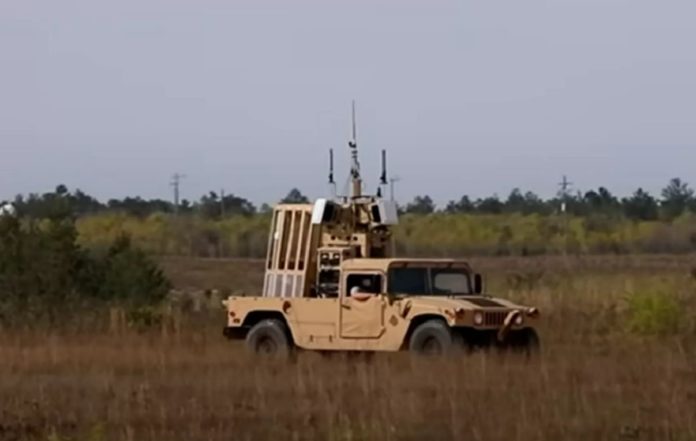The U.S. Defense Advanced Research Projects Agency (DARPA) announced that it had successfully demonstrated its new Mobile Force Protection (MFP) system, which launches semi-autonomous interceptors capable of clogging the propellers and rotors of the enemy drones and shooting them down.
In a press release on MFP, DARPA mentions a specific interceptor called CUGAR, configured by technology Dynetics.
Currently, the demonstration system has six interceptor launch tubes powered by compressed air pneumatic ejector systems. Each interceptor carries multiple “effector tubes” filled with what has been described by DARPA as “pink goo” or “strong and stringy streamers” that can disable the propulsion system of a hostile drone, said Tactical Technology Office of DARPA, Greg Avicola to The War Zone portal.
- Scientists in Fear of This New Predator From Red Sea Eating Native Species in Mediterranean
- Does This Mean We Stopped Being Animal and Started Being Human Due to ‘Copy Paste’ Errors?
- The One Lifestyle Choice That Could Reduce Your Heart Disease Risk By More Than 22%
- Aging: This Is What Happens Inside Your Body Right After Exercise
- Immune-Boosting Drink that Mimics Fasting to Reduce Fat – Scientists ‘Were Surprised’ By New Findings
The system is guided and controlled by a human operator, but the agency’s goal is to design an autonomous system that can handle a large number of incoming drone threats at once. Currently, each individual interceptor is capable of multiple hostile drone engagements in a single launch.
Generally the system uses an X-band radar to detect and identify drones within its airspace, but the interceptors tested so far are also equipped with another radar system on board. After the master MFP unit assigns and directs an interceptor toward a target, this radar takes over to strike the target with its effector bursts.
Once the MFP interceptors use up their effectors, they can land on their own to later be recovered. Once recovered, each reusable interceptor can be rearmed and charged with new battery packs in less than twenty minutes.
According to Avicola, Dynetics CUGAR interceptors are capable of staying in the air for ten minutes. Once an interceptor has defeated an incoming threat or multiple threats, it will escort the vehicle from which it was launched until it runs out of battery and lands.
The system was designed small in size primarily to be mobile and capable of operating on rough terrain. It could be deployed inside modular containers, aboard ships, or armored vehicles like the Hummvee.
MORFIUS
In addition to CUGAR, the agency also tested another drone interceptor, Lockheed Martin’s Mobile Radio Frequency-Integrated Unmanned Aerial Systems Suppressor, or MORFIUS, Avicola adds.
Lockheed Martin describes MORFIUS as a “reusable, high-powered microwave interceptor.” It is claimed to be capable of defeating multiple threats simultaneously in a single attack using high-power microwaves (HPM).
HPMs, in turn, are a form of directed energy weaponry that is capable of disrupting or even destroying electronics within drones or weapon systems, literally frying their circuits from within.
The exact capabilities of Lockheed Martin MORFIUS in terms of what types of drones it can defeat or disrupt remain unknown, but the limitations of any existing interceptor motivate DARPA to develop a system capable of transporting and launching multiple types of interceptors at once.
- Scientists in Fear of This New Predator From Red Sea Eating Native Species in Mediterranean
- Does This Mean We Stopped Being Animal and Started Being Human Due to ‘Copy Paste’ Errors?
- The One Lifestyle Choice That Could Reduce Your Heart Disease Risk By More Than 22%
- Aging: This Is What Happens Inside Your Body Right After Exercise
- Immune-Boosting Drink that Mimics Fasting to Reduce Fat – Scientists ‘Were Surprised’ By New Findings
With the new MFP system, the agency clearly opts for a modular anti-drone approach that would allow it to add new and expanded capabilities as drone systems evolve.
